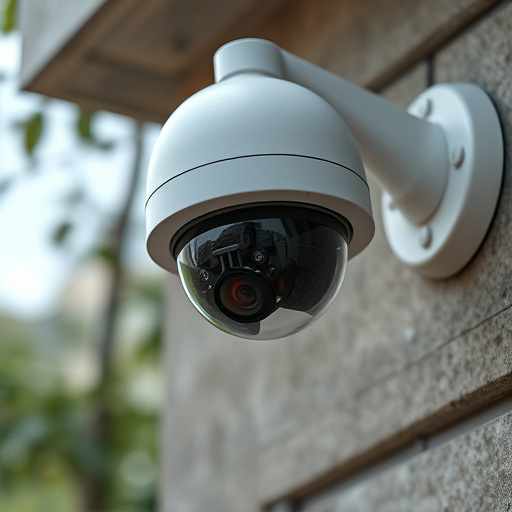Blinking LED fake security cameras mimic real surveillance equipment but offer no monitoring. Genuine security cameras provide real-time video, evidence capture, and peace of mind. Strategically place fake cameras to deter intruders, but verify features like live streaming. Consider legal and ethical implications; prioritize transparency to avoid distress or privacy infringement.
“Blinking LED fake security cameras have become a growing concern in today’s digital landscape, posing significant risks to privacy and security. This article delves into the intricate world of deceptive device setups, exposing the components that make them nearly indistinguishable from real security cameras. We explore strategic placement, visual cues, potential hazards, legal implications, and ethical considerations, offering insights to help individuals navigate this modern-day enigma.”
- Understanding Fake Security Cameras
- Components of a Deceptively Real Setup
- Placement and Visualization Strategies
- Potential Risks and How to Mitigate Them
- Legal and Ethical Considerations
Understanding Fake Security Cameras
Blinking LED fake security cameras have become a prevalent and concerning trend in the world of home security. These devices, designed to look like real surveillance cameras, often come equipped with a flashing red or blue LED light, mimicking the behavior of an active camera. However, they serve no actual monitoring purpose; instead, they are used as a deterrent or for pranks. Understanding this distinction is crucial when evaluating your home security system.
While fake security cameras may provide a false sense of safety, they can also attract unwanted attention from would-be intruders. The LED blinking effect might even signal to potential criminals that the property is occupied, leading to further scrutiny and potentially deterring them from breaking in. In contrast, genuine security cameras offer real-time monitoring, evidence capture, and peace of mind, making them an indispensable component of a comprehensive home security setup.
Components of a Deceptively Real Setup
A deceptively real fake security monitoring device setup typically includes a few key components that work together to create an illusion of robust security. One such element is the blinking LED fake security camera. These cameras are meticulously designed to mimic the appearance and behavior of genuine surveillance equipment, complete with adjustable LEDs for a dynamic flash pattern.
Complementing these visual deception devices are other elements like motion sensors and alarm systems that trigger when any unusual activity is detected, further enhancing the setup’s realism. The combination of these components creates an environment where intruders or potential threats are deterred by the appearance alone of robust monitoring, even if the actual security measures in place may be less stringent.
Placement and Visualization Strategies
Placement is key when setting up fake security monitoring devices, especially blinking LED fake security cameras. Strategically position them in high-risk areas like entry points, windows, and valuable asset locations. This creates the illusion of a fully functional surveillance system, deterring potential intruders. Visualization plays an equally vital role; mounting these realistic-looking cameras at eye level or slightly elevated angles ensures they’re visible, enhancing the overall security posture.
Consider using corners and junctions where multiple paths converge, as this increases their effectiveness in monitoring and dissuading unauthorized access. The blinking LED feature adds to their authenticity, mimicking real camera movements. By combining clever placement and a well-planned visualization strategy, you create an effective, albeit fake, security network that can significantly improve home or business safety without the need for costly full-scale surveillance setup.
Potential Risks and How to Mitigate Them
While blinking LED fake security cameras can seem like a cost-effective way to enhance home or business security, they come with potential risks. One major concern is that these devices often lack real-time video feed and recording capabilities, leaving users unaware of actual security breaches. Moreover, their flashy lights might actually attract unwanted attention from criminals.
To mitigate these risks, it’s crucial to verify the camera’s specifications before purchase, ensuring it offers live streaming and recording functions. Additionally, consider using them as part of a broader security system. Discreetly placing fake cameras alongside genuine ones can deter intruders without revealing the exact locations of your actual surveillance equipment.
Legal and Ethical Considerations
Setting up a fake security monitoring device, such as blinking LED fake security cameras, raises several legal and ethical concerns. In many jurisdictions, using realistic-looking but non-functional surveillance equipment is illegal if it misleads individuals into believing they are under constant observation. This can lead to charges of fraud or deception, depending on the intent and local laws.
Moreover, ethical considerations come into play regarding privacy rights. Even though these devices do not capture actual footage, their very presence could create an unsettling feeling of being watched, impacting an individual’s sense of security and privacy. It is crucial for users to be transparent about the nature of these devices to avoid causing unnecessary distress or infringing on others’ personal space and autonomy.
While blinking LED fake security cameras may seem like an innocuous addition to your home or business, understanding their potential as part of a deceptively real setup is crucial. By familiarizing yourself with the components, placement strategies, and legal considerations outlined in this article, you can protect yourself from falling victim to such deception. Always stay vigilant and ensure that any security measures implement genuine, certified equipment for true peace of mind.
